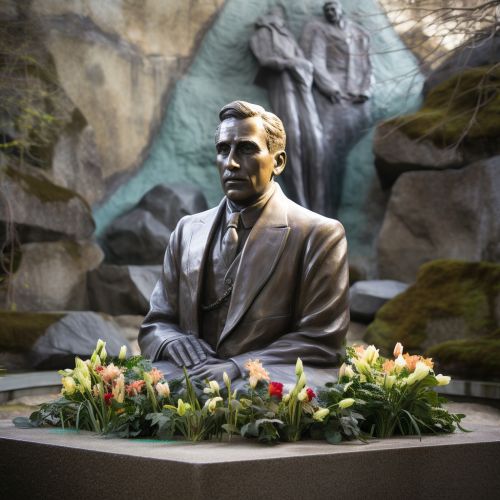Alfred Wegener
Early Life and Education
Alfred Lothar Wegener was born on November 1, 1880, in Berlin, Germany. His father, Richard Wegener, was a classical languages teacher and pastor. Alfred was the youngest of five children in his family. He attended the Köllnisches Gymnasium in Berlin, where he showed a keen interest in the natural sciences. Physics, astronomy, and meteorology were among his favorite subjects.

After graduating from high school, Wegener enrolled at the University of Berlin in 1899. He studied physics, meteorology, and astronomy, but he also developed an interest in polar research after hearing a lecture by the famous explorer Fridtjof Nansen. Wegener earned his doctorate in astronomy in 1905, but his fascination with the polar regions had already set the course for much of his future career.
Career and Research
After completing his doctorate, Wegener took up a position at the Royal Prussian Aeronautical Observatory near Berlin, where he worked on issues related to meteorology and atmospheric physics. He participated in several balloon flights to study the upper atmosphere and made significant contributions to the understanding of the stratosphere.
In 1906, Wegener participated in his first polar expedition to Greenland. The experience had a profound effect on him, and he would return to the Arctic several times in his career. During these expeditions, he made important observations about the climate and geology of the polar regions.
Wegener's most significant contribution to science came in 1912, when he proposed the theory of continental drift. This theory suggested that the continents were not fixed in place, but slowly moved across the Earth's surface. Wegener's idea was based on several lines of evidence, including the similar shapes of the east coast of South America and the west coast of Africa, the distribution of fossils across different continents, and the presence of similar rock formations in different parts of the world.
Despite the compelling evidence, Wegener's theory was met with skepticism and even hostility from many in the scientific community. Critics argued that Wegener could not provide a convincing mechanism for the movement of continents. It was not until the mid-20th century, with the development of the theory of plate tectonics, that Wegener's ideas were finally accepted.
Later Life and Legacy
Wegener continued his polar research throughout his career. In 1930, he embarked on his fourth and final expedition to Greenland. Tragically, he died during this expedition, likely from heart failure, while attempting to resupply a remote weather station.
Despite the initial rejection of his theory of continental drift, Wegener's work has had a profound impact on the field of geology. His ideas laid the foundation for the modern theory of plate tectonics, which has revolutionized our understanding of the Earth's structure and the processes that shape its surface.

Wegener's life and work demonstrate the importance of perseverance in the face of skepticism and the value of interdisciplinary research. His legacy continues to inspire scientists and explorers around the world.
